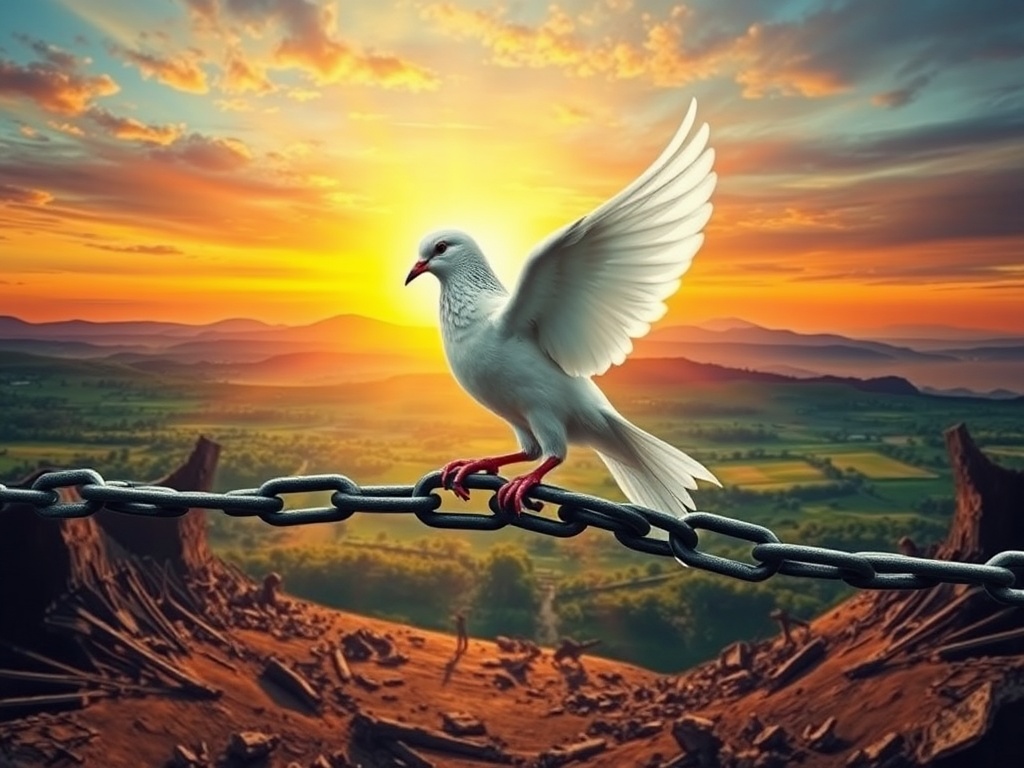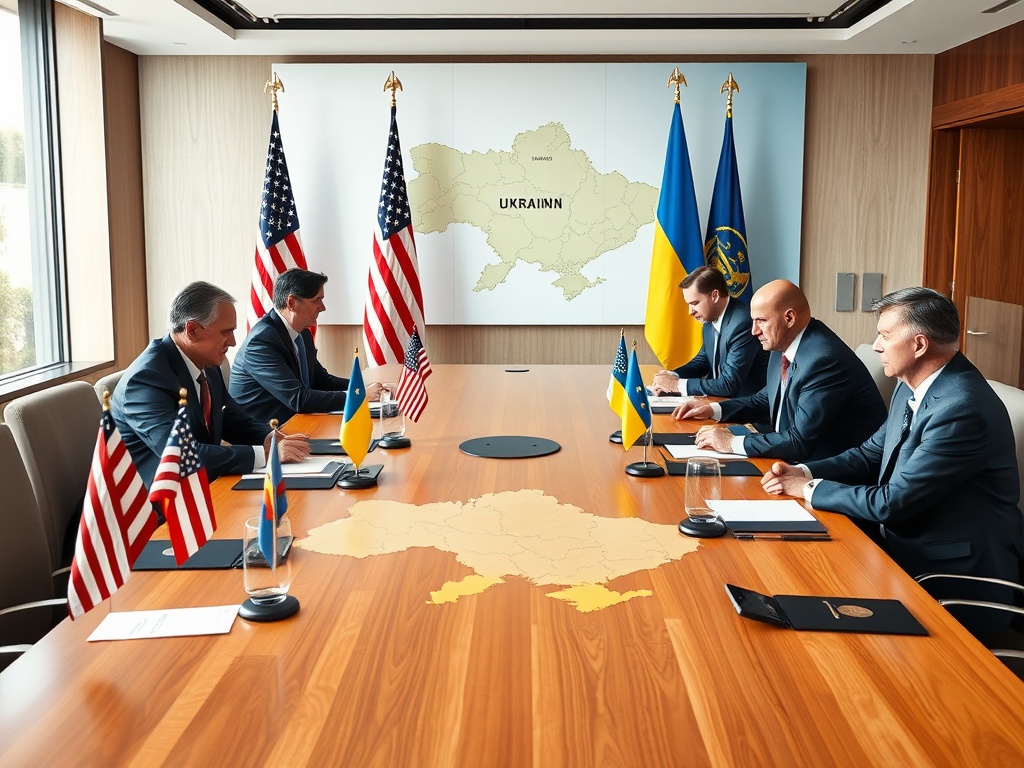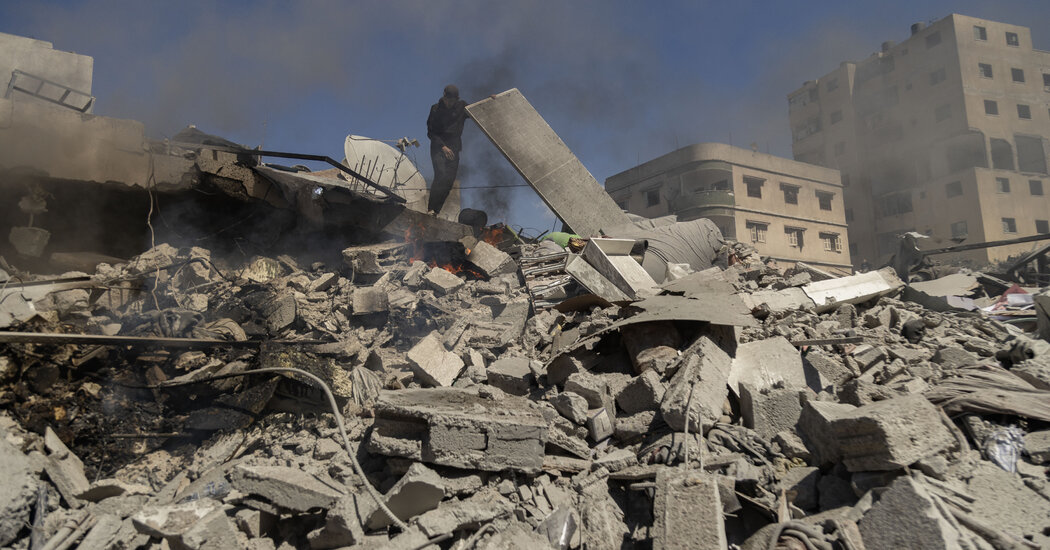Negotiations Amidst Tensions: The US and Ukraine
Despite ongoing complexities in recent discussions, Washington and Kyiv remain steadfast in their commitment to pursue a peace deal. The dialogue this week between the US and Ukrainian presidents has unveiled stark contrasts in their expectations, further complicated by Donald Trump’s perplexing alignment with Russia. This convergence of interests raises serious doubts about the feasibility of achieving a lasting agreement. Global affairs analyst Fareed Zakaria remarked, “Nobody was expecting this,” referring to the US seemingly siding with an “aggressive dictator.” He added, “This is a breathtaking reversal in US foreign policy.”
Diplomatic conversations are continuing across both sides of the Atlantic. White House National Security Adviser Mike Waltz has urged Ukrainian President Volodymyr Zelensky to temper his rhetoric and “sign that deal.” However, the proposed deal would require Ukraine to allocate 50% of its revenue from rare earth minerals and other natural resources to the US, a condition that raises eyebrows in Kyiv.
Even if an agreement is reached among the US, Ukraine, and Russia, concerns linger about the potential for persistent underlying tensions that could spiral into a broader conflict across Europe. The outcome of these fraught negotiations remains uncertain, but several scenarios could lay the groundwork for regional instability.
1. A Ceasefire That Lacks Longevity
Ukraine has expressed apprehension that a temporary ceasefire could grant Russia the crucial time needed to regroup and launch a more potent offensive. Analysts argue that while Vladimir Putin may show interest in negotiations, he likely harbors no genuine commitment to peace. Former NATO representative John Lough stated, “I tend to think that the most likely scenario is that both Russia and the US will push for a ceasefire, simply because the underlying problems here are so complex that time would be necessary to negotiate those issues.”
Zelensky has asserted that there will be no peace deal without active Ukrainian participation. Furthermore, a ceasefire could provide a “perfect pretext” for Ukraine to lift its martial law, which was enacted in response to Russia’s invasion, thereby enabling elections. Both Trump and Putin may be keen to see Zelensky replaced with a more amenable leader. Lough warns, “If that happens, I think that’s a very dangerous scenario for Ukraine, as it could unleash various societal divisions.” Additionally, he pointed out that the Russians have a poor track record of adhering to ceasefire agreements, underscoring the potential dangers of such a scenario.
2. Russian Aggression Toward Peacekeeping Forces
Trump has suggested the withdrawal of US forces from critical positions in Eastern Europe, a move that could embolden Russia and diminish the deterrent power of the Western alliance. US troops, as part of NATO’s units along the eastern flank, play a pivotal role in enforcing conflict deterrence against Russia’s advances. Lough emphasized, “If the US presence on the NATO frontline were to be reduced, there’s no doubt that Russia would interpret that as a signal of the ongoing US withdrawal from Europe.”
This could provide Russia with the opportunity to act more aggressively without facing serious repercussions. Robert Hamilton, head of Research at the Foreign Policy Research Institute’s Eurasia Program, stated, “It would be a huge symbolic loss for NATO. It’s long been a Russian goal to split the US from the NATO alliance, and Trump appears to be facilitating that.” Analysts contend that any significant reduction in US military presence would undermine the deterrent capability of European nations, particularly as Russia enhances its military technology and forges ties with authoritarian regimes.
3. Trump’s Alignment with Russia
Trump’s advocacy for Russia’s re-entry into the ranks of the world’s largest democratic economies has left many observers bewildered. This proposal echoes sentiments directly aligned with Kremlin interests. Analyst Kim Dozier remarked, “It shows how far Putin was able to get into Trump’s head.” The softening language used by the Trump administration in describing the conflict in Ukraine as a mere “conflict” is seen as an attempt to placate Moscow, a move that has alarmed many.
Lough noted, “You can see this sort of neutralization of language. That’s definitely an effort to draw closer to the Russian position.” Reports indicate that the US has blocked the phrase “Russian aggression” from the G7’s official statements, reflecting a shift in perspective. Furthermore, the participation of the Ukrainian president in a virtual G7 summit remains unconfirmed, raising further concerns.
4. Ongoing Russian Hostilities Against the West
Regardless of the negotiations’ outcomes, analysts assert that Russia will persist in its hostilities against the Western democratic order. Moscow continues to perceive itself as engaged in a war against the West, driven by the belief that it is obstructing Russia’s ascendance. Military analyst Cedric Leighton stated that Russia would continue its campaign through acts of sabotage, targeted assassinations, and disinformation.
As tensions heighten, the potential for a larger military confrontation looms large. Russia is not only seeking to expand its influence but has also welcomed pro-Moscow governments in former Soviet republics such as Moldova and Georgia. Hamilton asserted, “Russia has been waging war for decades, and it’s not going to stop.” Zakaria lamented, “I think we are witnessing history right now in a very tragic way.”
5. The Improbability of a Peace Deal

President Biden appears determined to achieve a ceasefire agreement between Russia and Ukraine at almost any cost, aiming to fulfill a campaign promise and project strength. However, the conditions he imposes — such as requiring Ukraine to sign contracts regarding its rare mineral resources and Moscow’s extreme demands for territorial control — significantly complicate the prospects of reaching a durable agreement.
Analysts suggest that obtaining a deal may be increasingly unlikely. No Ukrainian leader, including Zelensky, could realistically agree to terms that would surrender a substantial portion of the country’s natural resources, which are vital for its economic future. Waltz has urged Ukraine to cease its criticisms of Trump, asserting, “It’s unacceptable. They need to tone it down and take a hard look and sign that deal.”
However, US intelligence indicates that Putin remains steadfast in his aspirations to dominate Ukraine. Reports characterize him as “obsessed” with Ukraine, implying that even if he consents to negotiations, his broader ambitions remain unchanged. Analysts suggest that Russia could sustain its military efforts for over a year, despite sanctions imposed by the US and European nations. Should the US withdraw its support from Kyiv, Ukraine’s capacity to continue fighting would likely diminish significantly.
Lough concluded, “A deal may be reached, but it may not be something that the Ukrainians and their European partners wish to support, leading to a potential rejection of that deal. Consequently, the war could continue, posing serious questions about the extent to which close European partners would be willing and able to support Ukraine further. That would be an ugly scenario, but it’s a perfectly possible one.”




